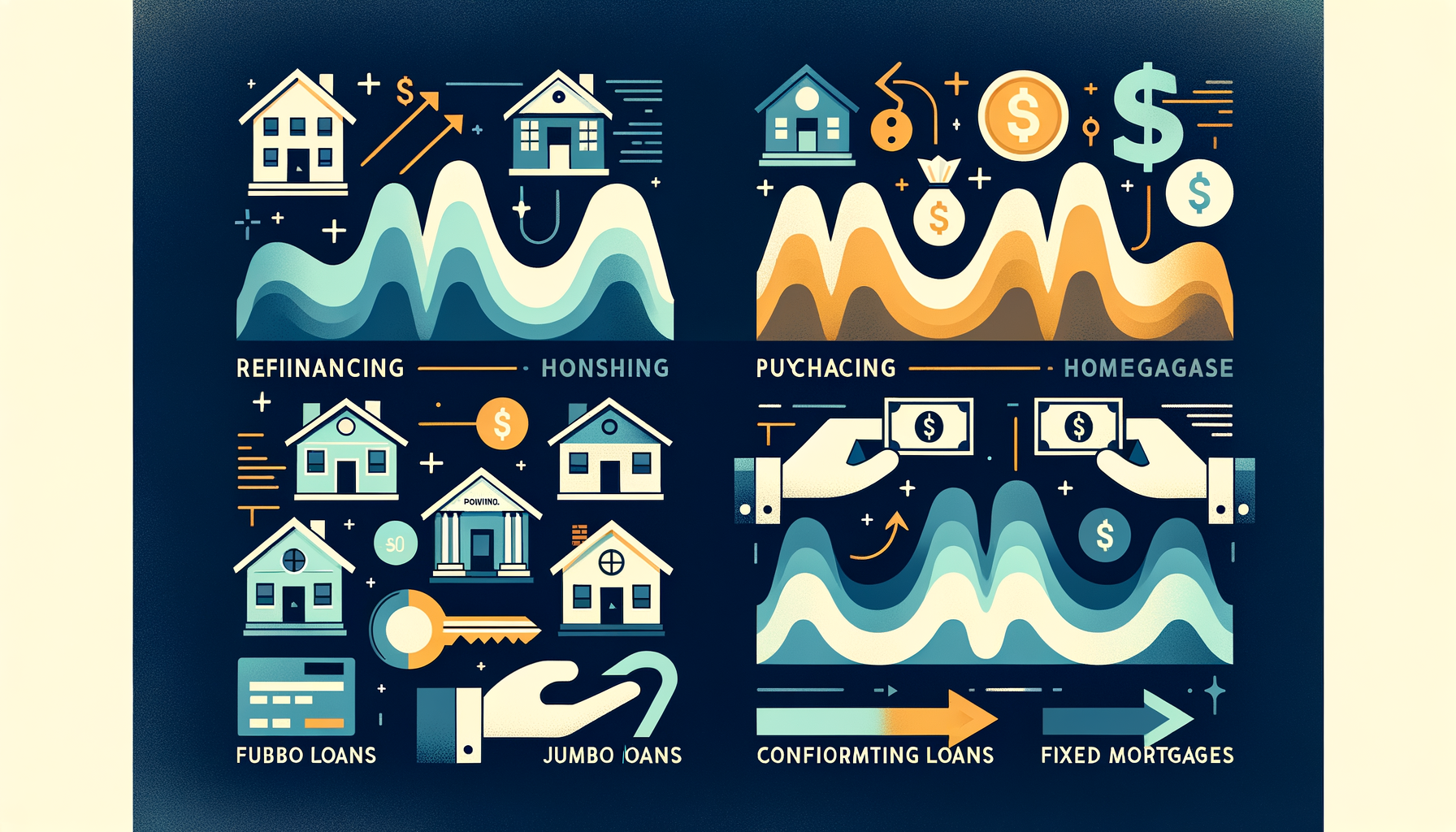“Exploring the Recent Fluctuations in Mortgage Application Volume: Key Insights and Analysis”
The ebb and flow of the housing market hinges greatly on the frequency of mortgage applications, with the significance of these applications reaching a global scale. Mortgage applications, seen as the lifeblood of this crucial industry, are handled with equal parts scrutiny and robust analysis. It was revealed recently that there was a change in the rate of mortgage applications, and this performance fluctuated in both week-to-week comparisons and on a year-on-year basis. This look into the world of mortgage applications offers a fresh perspective on the state of the housing industry in the United States.
Surveying the Landscape of Mortgage Applications in the U.S.
To begin with, it’s important to have a grasp of the survey results provided by the Mortgage Bankers Association (MBA). This organization showcases the weekly shifts in the volume of mortgage applications for both purchasing houses and refinancing existing mortgages. Known as the Market Composite Index, this metric has been instrumental in tracking the shifts within the mortgage industry across the U.S.
The most recent index conveyed a decrease in mortgage application activity of 1.8% for the specified week under review on a seasonally adjusted basis. This followed the footsteps of a previous week’s 7.1% increase. The amalgamation of mortgage-related activities was given not only on a seasonally-adjusted perspective but also on a non-seasonally adjusted one. Here, it saw a decrease of 1% compared to the previous week.
A Closer Look on The Refinance Index
Zooming into the refinancing segment, the data provided an interesting outlook. According to the survey, the Refinance Index dropped by 5%. It was a reversal from the significant bump of 9% seen during the week beforehand. A very significant point to realize here is the year-over-year perspective; it showcased an upward trend of 178% from the same week the previous year.
In the grand scheme of things, the share of refinance applications as a percentage of overall mortgage activity fell slightly. It now positioned at about 70.2%, a drop from 71.4% the week prior.
The Mortgage Market under the lens of Purchase Index
The Purchase index, on the other hand, had a different story to tell. On an unadjusted basis, the Purchase Index increased by 1% compared to the previous week. Interestingly, even on a year-over-year comparison, it had maintained a 15% escalation from the same week the past year. In the same vein, the seasonally adjusted Purchase Index increased by 2% from the previous week. Consequently, the Purchase Index marked its highest level in a month.
The Role of Government Mortgage Applications
Analyzing further, a look at the Federal Housing Administration (FHA) data shows the share of applications remained unchanged at 11.2%. Similarly, the Veterans Affairs (VA) guaranteed loans share also made up 10.5% of total applications, unchanged from the previous week. In contrast, the Department of Agriculture share of total applications saw a minuscule decrease from 0.4% to 0.3%.
Understanding Jumbo vs. Conforming Loans
In terms of loan sizes, the average loan size for purchases reached a survey high of $418,700. This is essential to note as larger loan sizes often indicate more activity in the high-end market.
Subsequently, the size of a jumbo loan, which are loans above certain dollar thresholds, dwindle compared to conforming loans. To clarify, conforming loans meet the guidelines set by the two biggest dependable corporations in the U.S, namely Fannie Mae and Freddie Mac. However, jumbo loans are larger and not underwritten by these entities.
These loans saw an average contract interest rate decrease from 3.28% to 3.25% for 30-year fixed-rate mortgages, with points decreasing to 0.29 from 0.38 for loans with a downpayment of 20%. This scenario indicates decreased interest for larger loans, which often relates to higher-end properties.
In comparison, the weekly average contract interest rate for 30-year fixed-rate mortgages on conforming loans ($510,400 or less) reduced to 3.72% from 3.77%, with points decreasing to 0.28 from 0.30. This included the origination fee for 80% loan-to-value (LTV) ratio loans and suggested increased interest in this form of borrowing.
The Interest Rates and ARMs
Speaking about the interest attributed to home borrowings, the average contract interest rate for 15-year fixed-rate mortgages reduced from 3.22% to 3.18%, while points decreased from 0.26 to 0.23.
Furthermore, the average contract interest rate for 5/1 adjustable-rate mortgages (ARMs) increased to 3.23% from 3.21%, with points increasing to 0.21 from 0.13. This suggests a slight increase in ARMs, perhaps due to perceived benefits over fixed mortgages in the current financial climate.
Conclusion
In essence, this analysis of the ebbs and flows in the mortgage industry paints a vivid picture of the U.S. housing market, impacted by notable economic events, fluctuations in interest rates, and overall market health. The mix of increase, decrease, and stabilities across different mortgage segments offer an exciting insight into current trends and shapes expectations for the year ahead in the housing industry. As economic indicators, mortgage applications serve as a reflection of consumer confidence and the perceived health of the housing market. Hence, keeping a keen eye on these developments can help one stay well-informed and make better decisions in this significant financial landscape.

